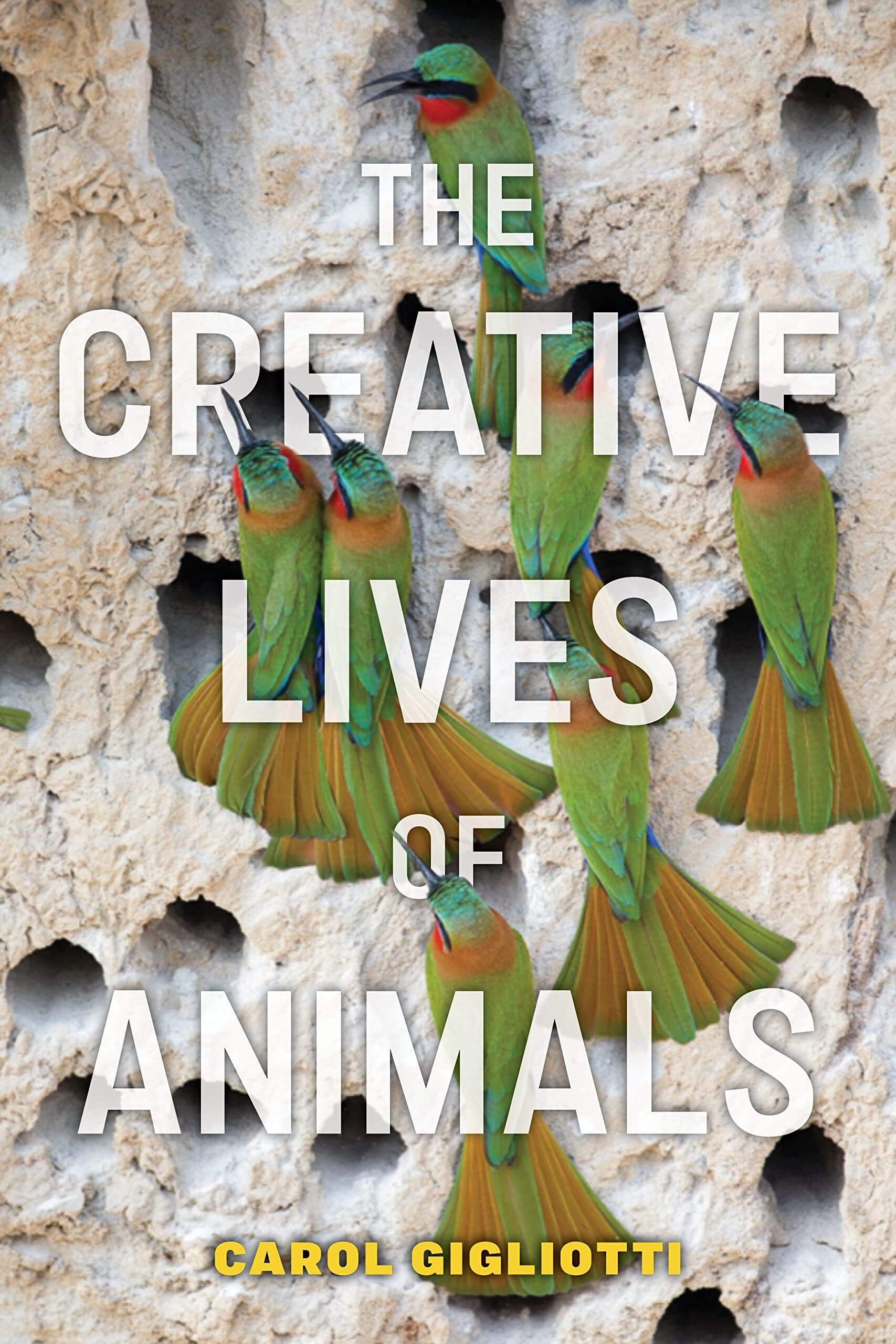‘The Creative Lives of Animals’ Reveals World-Making Power of Animal Ingenuity

The Creative Lives of Animals tracks a wealth of scientific research showing animal creativity’s vital role in preserving planetary health. (Image courtesy NYU Press / Carol Gigliotti)
Posted on
In her new book, author Carol Gigliotti says conservation requires a wholesale shift in how we view our animal neighbours.
A new book from writer, artist and ECU professor emerita Carol Gigliotti argues animal creativity not only exists, but also helps support life as we know it.
The Creative Lives of Animals tracks a wealth of scientific research showing animal creativity’s vital role in preserving planetary health.
“Animals are essential to biodiversity, and so is their creativity,” Carol tells me via Zoom from her home in Oregon. “I wanted to show how essential and powerful animals are and not just look at them as victims.”
A great deal of research is devoted to uncovering the secrets of how animals support ecosystems. Often, this research aims to duplicate those efforts using human technology and engineering, Carol says. But few such attempts have been successful.
This is because animal creativity rarely figures into human analysis of their “utilitarian” ecological functions. And animal creativity isn’t easily understood, let alone replicated. For this reason alone, Carol says animals are irreplaceable members of our global community.
In a recent article in The Scientist, Carol uses beavers as an example. The herbivorous mammals produce aquatic habitats “superior” to any made by human engineers. Moreover, beavers often modify human-made dams to improve their ecological function. All of this is accomplished in part thanks to animal creativity.
“[The] creative process often takes a zigzagging course, driven by ongoing exploration,” Carol writes. “[The] ability to recognize an opportunity is key to the creative process, and beavers demonstrate their flexibility and ingenuity in doing so.”

“Animals are essential to biodiversity, and so is their creativity,” says Carol writer, scholar, artist and ECU professor emerita Carol Gigliotti. (Image courtesy Carol Gigliotti)
Another of Carol’s central points is that we should value animals as individuals. This idea can seem radical at first, she says. But it’s supported by cutting-edge research. And it’s even true for creatures many of us dismiss, such as insects.
“When you kill off a particular individual, you’re killing off individual creativity that should be contributing to biodiversity,” she says. “And animal creativity is linked to their individuality even in species that we think of as very group-oriented, like bees. Individuals, even for bees, are very important in the creative process.”
Predictions for the future seem to grow grimmer every day, Carol continues. The climate crisis and biodiversity crisis are two sides of the same coin. To ignore the urgency of these problems is to ignore an existential threat to humanity.
Part of getting ourselves out of this mess is rethinking how we view our animal neighbours, she says. Fortunately, this is not just an ideological argument. Carol’s book springboards from rigorous scientific research that underscores this very point.
“I couldn’t have written this book without all the science,” she tells me. “Animals are powerful, and we treat them like we treat everything — as if we are lords of the manor. But animals are essential. Their creativity is essential. We need to begin thinking of them differently.”
Carol will appear at READ Books at ECU on March 23 with ECU faculty member Julie Andreyev to explore these themes and read from her book.
The Creative Lives of Animals is published by NYU Press. Visit them online to learn more about the book and to purchase a copy.